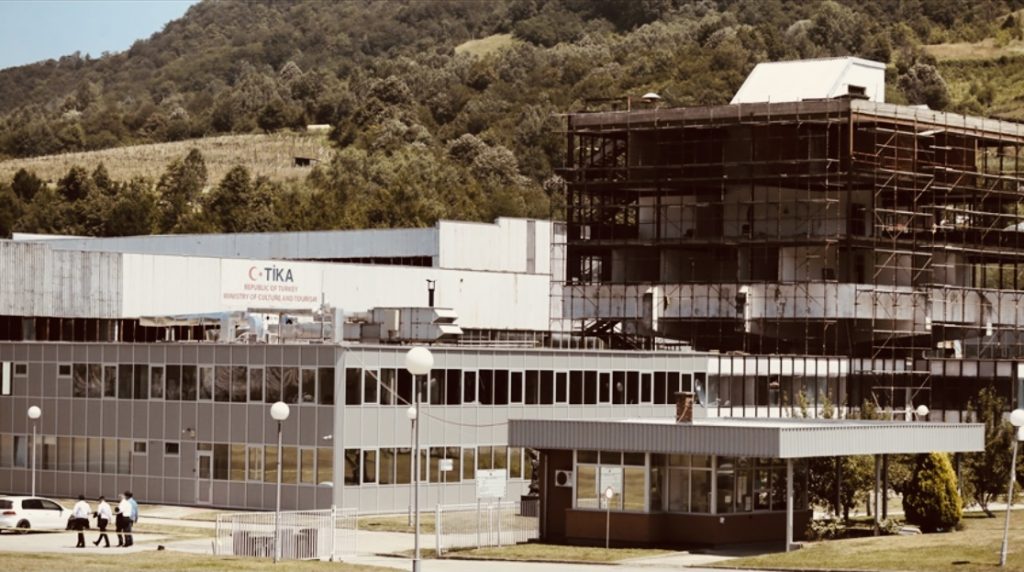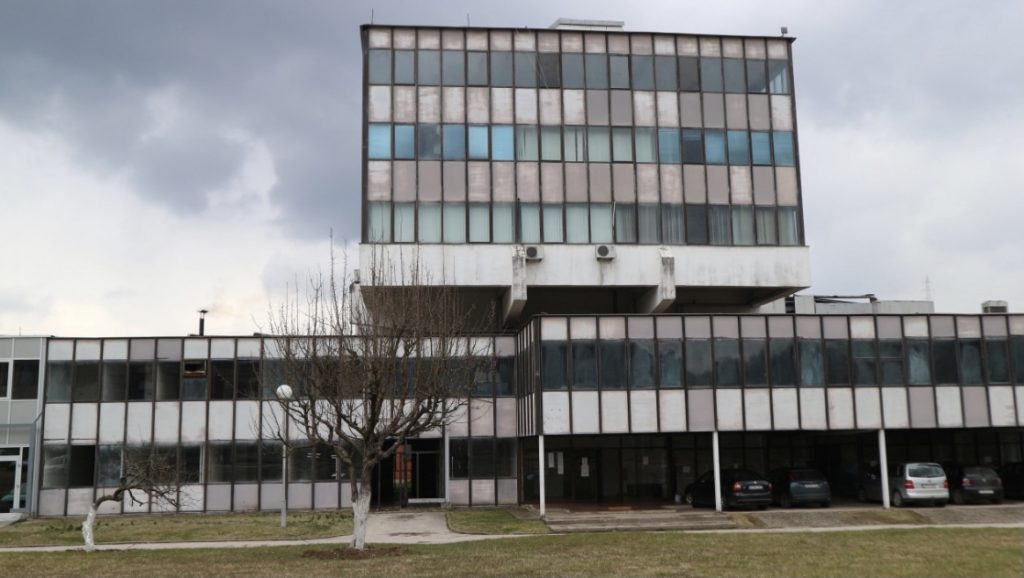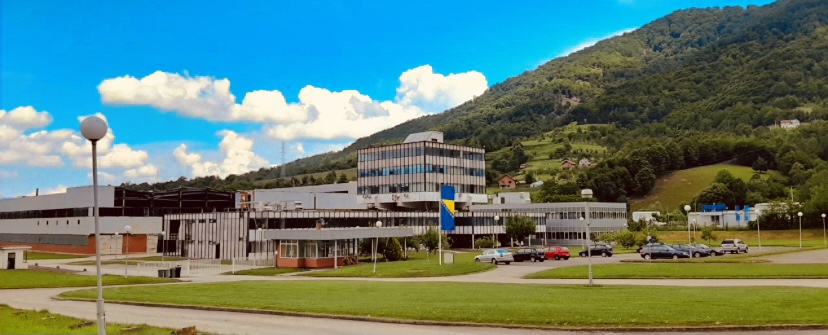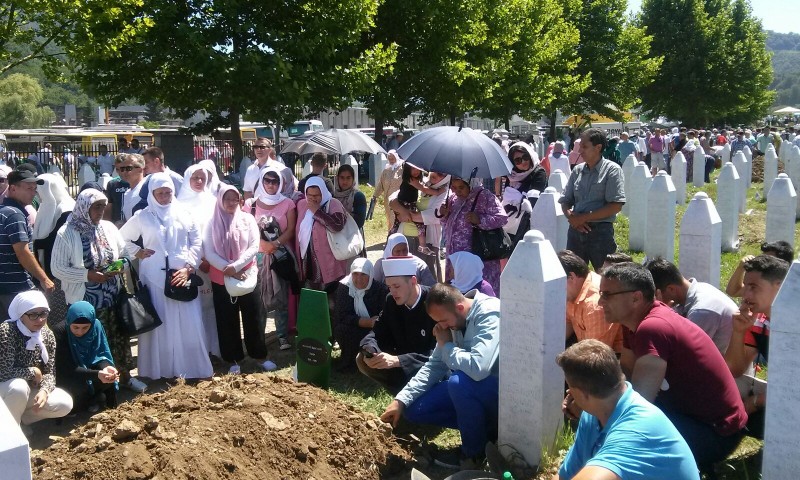Emir Suljacić
Director of the Srebrenica Memorial Centre
Twenty-six years ago, when the first survivors of the Srebrenica genocide began emerging from the woods, no one believed their accounts of what they had experienced. No one believed them when they described surviving the numerous mass executions carried out across the vast area between the towns of Bratunac and Zvornik that were under Serb control, starting in the spring of 1992.
The Dutch Government, wittingly or unwittingly, helped cement this disbelief by initially backing the claims of the Dutch battalion (Dutchbat) based in the enclave in July 1995 – and of the Commander in Chief of the Dutch UN contingent in Bosnia and Herzegovina, Lt. General Hans Couzy – that the Serb operation in Srebrenica was “militarily correct”. The Dutchbat commander went as far as to say that what was later rightfully defined as forcible transfer of the population was a simple population movement executed by Ratko Mladić’s troops “in the right way”.
It took months for the Dutch Government to distance itself from the claims that Dutchbat witnessed nothing improper in Potočari in July 1995. The damage, however, was already done. It was also permanent.
The cynicism of Dutchbat – or most members of the Dutchbat – lies not in their failure to prevent genocide. It lies in the fact that few of them are willing to even testify about it. In any case, mass graves spoke louder than these soldiers ever could to the genocidal nature of the Bosnian Serb operation in Srebrenica.
For reasons that I fail to understand, Dutchbat takes centre stage in the prevailing Dutch narrative of what happened in Srebrenica. It continues to undermine the possibility of restoring any meaningful relationship between Dutchbat and the community of survivors.
Our story is the story of thousands of men who were handed over to the Serbs to be summarily executed while the Dutch soldiers put in charge of protecting them merely stood by. It is the story of the thousands of men who fled the compound on foot in an attempt to reach safety, only to be hunted down and slaughtered. It is the story of the tens of thousands of women and children who were forcibly deported. It is the story of three years of hunger, suffering and fear living under siege. It is the story of being betrayed by an international community who had promised to protect us, but who, as we were being killed, merely averted their eyes.
Within this story, the Dutch battalion is merely an unsavoury footnote. As long as they continue to place Dutchbat soldiers at the centre of their narrative of Srebrenica, Dutch society, and in particular the Dutch Government, are colluding with the revisionist forces attempting to obfuscate the human cost of the Srebrenica genocide and to confine our story to the peripheral margins of European history.
Twenty-six years ago, no one believed us. Yet today there’s a sprawling memorial centre at the site of the former Dutchbat base, encompassing a cemetery of victims of the Srebrenica genocide operation. It was first established as a cemetery and a private foundation run by leading representatives of the international community in 2001. Two years later, it was redefined as a memorial centre, still run as a private foundation, including the former base built on the site of a pre-war battery factory. In 2007, the then High Representative, a former German politician called Christian Schwarz-Schilling, enacted a law establishing the Srebrenica-Potočari Memorial and Cemetery for the Victims of the 1995 Genocide.



Ever since, our job has been both to wean the Memorial from international management and to move away from the judicial focus of the Srebrenica narrative. The genocide operation that commenced in July and lasted well into the autumn of 1995 did not take place in a historical, cultural, social, political or military vacuum. It came on the heels of a three-year siege of the Bosniak population of Eastern Bosnia, a relentless hunting season for “Turks” that claimed thousands of lives.
It took a quarter of a century for us to begin telling the story of the community that was destroyed. The past 25 years have been focused on the perpetrators, those responsible for the destruction. As the process of criminal prosecution has all but ground to a halt in Bosnia and Herzegovina, it is the job of the Srebrenica Memorial to find the voice of the victims and survivors and make it heard.
It is time to begin understanding the Srebrenica genocide within the context of a full-scale onslaught on an entire population, which spanned the length and breadth of our country. It is time to place Srebrenica in our history of the 1990s, but also in the narrative of the 20th-century Bosniak experience. It is time to tell our story.
Institutions like the Srebrenica Memorial Centre are monuments commemorating the dead, but they must also remain living institutions.
Srebrenica must not become a part of Bosnian memory alone, but a defining feature of European history, taught to all young people, particularly young Muslims. We were killed for one thing that we couldn’t change about ourselves: for the names that our parents gave us, for who our parents were, for what was imposed on us the moment we were born.
For that reason, it is our mission to record and publish as many testimonials from the survivors and witnesses of the Srebrenica massacre as possible, to preserve every single story. Piecing this narrative together is critical to understanding why it happened, and why it must never happen again.
As the dark clouds of ethnic and religious tensions gather yet again across the world, the experiences of these Bosniaks, not only related to surviving genocide but also living through the post-war era and contending with all the disappointments surrounding the promises of transitional justice, are more relevant and meaningful than ever before.
The remaining survivors, scattered around the world as many did not want to return to the land where so much was taken from them, still have so much to teach us. Their experiences should inform the decisions we make in the future.
Despite what some in the West’s policy and media circles try to argue, what happened in Bosnia a quarter-century ago was not a footnote, a mere anomaly, in European history. Just like the mass murder of European Jewry in the 1940s, the mass murder of Bosniaks in the 1990s was a direct consequence of the erroneous and highly dangerous way “Europeans” define their identity.
Muslims – together with Jews – have been playing the role of Europe’s “other” for centuries. The myth that has been built around the perception of Muslims as the inferior, aggressive, and at times dangerous “other” was undoubtedly one of the core reasons for Bosniaks’ suffering.
Today, the same dangerous myth is being used by the far-right across Europe and beyond to blame Muslims for the world’s many deep-seated problems. Srebrenica survivors are perhaps the ones best placed to tell the world what this type of hate and dehumanisation can lead to.
Today, what happened in the 1990s in Bosnia serves as an inspiration to far-right terrorists across the world as well as to their “anti-imperialist” allies. Today, we can no longer claim that genocide is impossible.
To say that what happened in Srebrenica in July 1995 was the first such crime perpetrated on European soil after World War II is to completely disregard the horror of the concentration camps discovered in 1992 or the rape camps for which there is no precedent in European history. Genocide in Bosnia and Herzegovina was a long process of systematic extermination.
We also do not need anyone to tell our story for us. We choose how we tell it, when, and to whom. When you are a survivor, it is sometimes difficult to let go of your own experience. The moment you speak or write about it, it no longer belongs only to you; it becomes part of a wider body of general knowledge. To ensure that our survival experiences are remembered, however, it is necessary to do just that.
